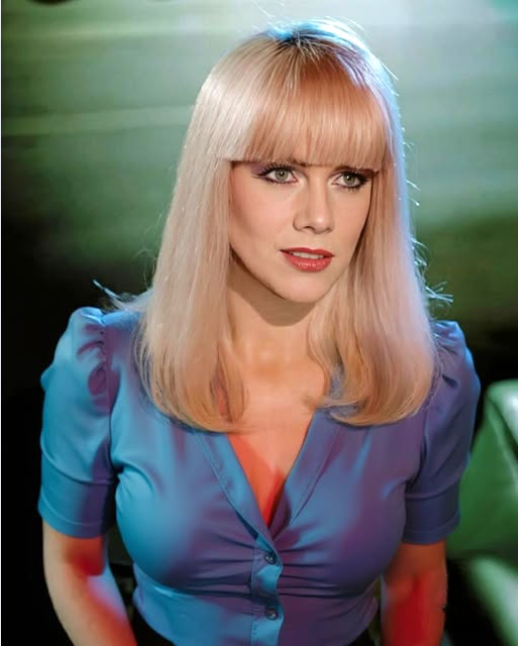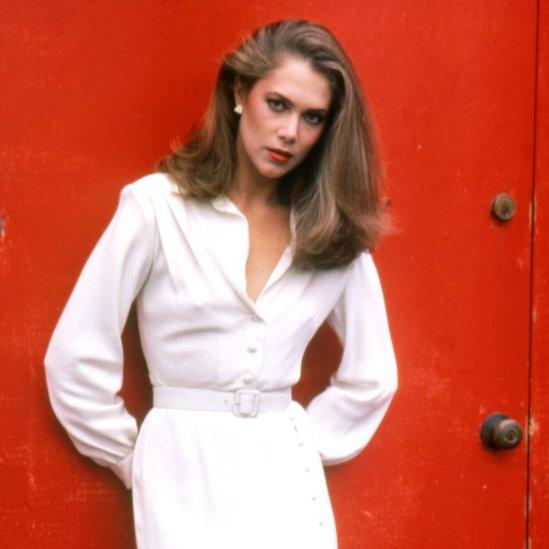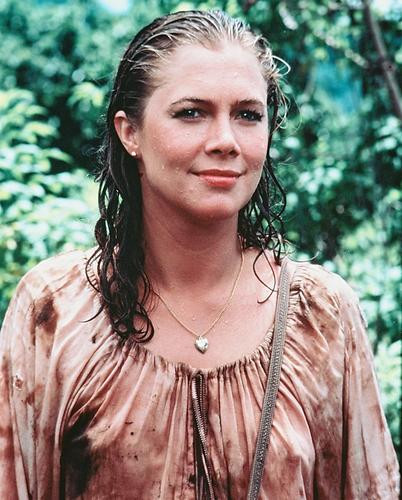In the golden era of 1980s Hollywood, no voice was more unforgettable — or more dangerous — than Kathleen Turner’s. Deep, sultry, and unmistakably commanding, her voice alone could stop you in your tracks. But it wasn’t just the sound. It was the power behind it. Kathleen Turner didn’t play ingenues. She played women who knew what they wanted — and dared anyone to get in their way.
And for a moment, she wasn’t just one of Hollywood’s biggest stars — she was Hollywood. A box-office draw. A critical darling. A symbol of confidence, sexuality, and strength. And then, nearly as quickly as she rose, she disappeared from leading roles. But Kathleen Turner never disappeared. She just evolved — on her own terms.
This is the story of the woman who scorched the screen, challenged the system, and kept her fire burning — even when the spotlight turned elsewhere.

The Rise of a New Kind of Leading Lady
Kathleen Turner burst into the public eye in 1981 with Body Heat, a neo-noir thriller that introduced her as a smoldering femme fatale. Critics compared her to Lauren Bacall and Barbara Stanwyck — but she wasn’t a copy. She was the 1980s version of that classic glamour: unapologetically bold, intellectually sharp, and refreshingly adult in an era of teen comedies and damsel tropes.
With Romancing the Stone (1984), she proved she had impeccable comedic timing and on-screen chemistry (especially with Michael Douglas). Prizzi’s Honor, Peggy Sue Got Married, The War of the Roses — all reinforced what audiences and directors were learning quickly: Kathleen Turner didn’t just elevate roles; she owned them.
She was nominated for an Oscar, won two Golden Globes, and held her own against the biggest names of the decade. She was sultry, yes, but she was also strong — and funny. Her characters didn’t exist to please men; they challenged them.

Then Came the Fall — and the Misdiagnosis
Just as she reached the height of her stardom in the early ’90s, Turner’s trajectory took a sudden and mysterious turn. Her appearance changed. Her energy seemed dulled. Tabloids pounced, with cruel speculation: Was it alcohol? Plastic surgery? A breakdown?
In truth, Turner was battling an invisible, excruciating illness: rheumatoid arthritis. For years, it went undiagnosed, and the chronic pain was unbearable. “I was in so much pain I couldn’t even pick up a glass,” she later revealed. Steroid treatments caused swelling, weight gain, and fatigue. Hollywood, always obsessed with youth and beauty, began to back away.
But Kathleen Turner did what she always did — she fought. She got a proper diagnosis. She began treatment. And she never stopped working.

Reinvention on Stage and Screen
Even as the movie roles slowed, Turner found a second wind on the stage. In the 2000s, she earned a Tony nomination for Who’s Afraid of Virginia Woolf? and won acclaim for her fearless stage presence — gravelly voice intact, now even more weathered and powerful.
She also turned to television, guest starring on shows like Friends (as Chandler’s trans parent, a bold role at the time), Californication, and The Kominsky Method. Each appearance reminded audiences that she was still very much a force — funny, sharp, and completely in control of her image.
Turner also began speaking openly about Hollywood’s treatment of women, aging, and her own experiences with illness and body image. She didn’t mince words. “When a man gets older, he becomes a distinguished actor,” she once said. “When a woman gets older, she’s an old broad.” But she liked being an old broad. And she made it look good.

The Voice That Never Faded
Kathleen Turner’s voice — both literally and figuratively — has always been her superpower. It’s what made Jessica Rabbit sizzle in Who Framed Roger Rabbit? and what made her presence linger long after she left the screen. But that voice has also become something more: a symbol of resilience, truth, and defiance.
Today, she uses it as an activist and advocate. She speaks out for women’s rights, health care access, and disability awareness. She writes, lectures, performs — and keeps showing up, even when Hollywood seems unsure of where to place powerful women over 60.

A Career on Her Own Terms
Kathleen Turner never played by the rules. Not in her roles, not in her career, not in her life. She could have coasted on her looks, chased safer parts, or faded into the background when things got tough. Instead, she got louder. Bolder. Braver.
Her story isn’t one of a comeback — because she never truly left. It’s the story of a woman who dominated an industry that didn’t know what to do with her power… and who is now reclaiming that power on her own stage, in her own voice.
And the best part? That voice still stops people in their tracks.